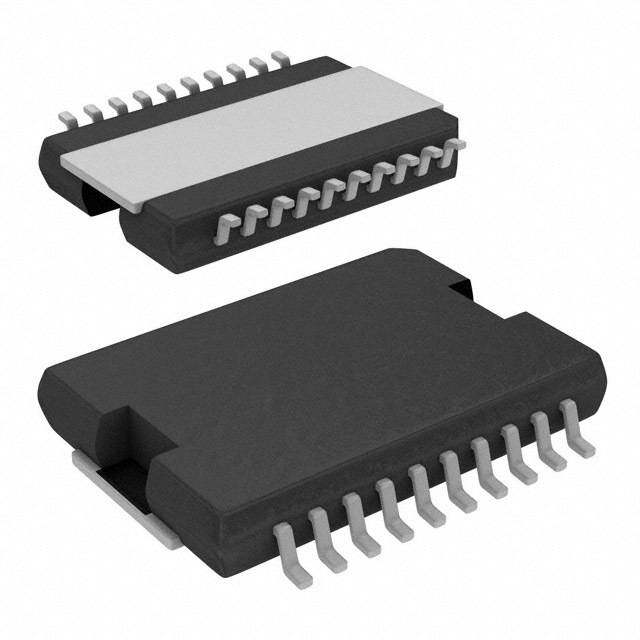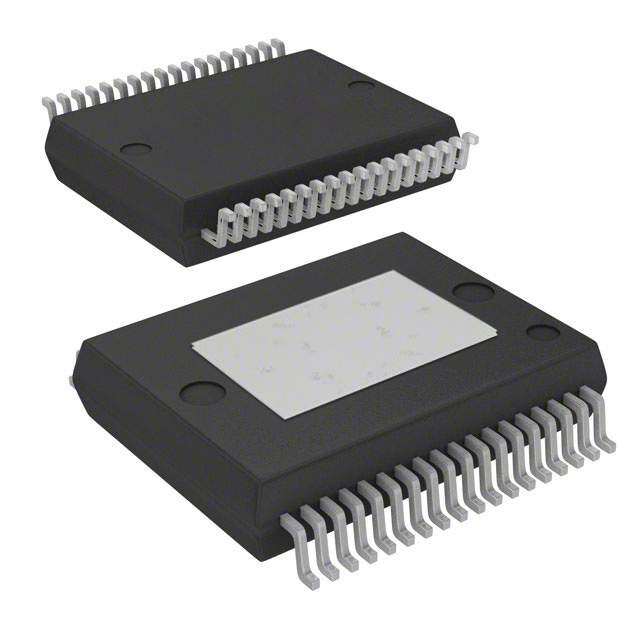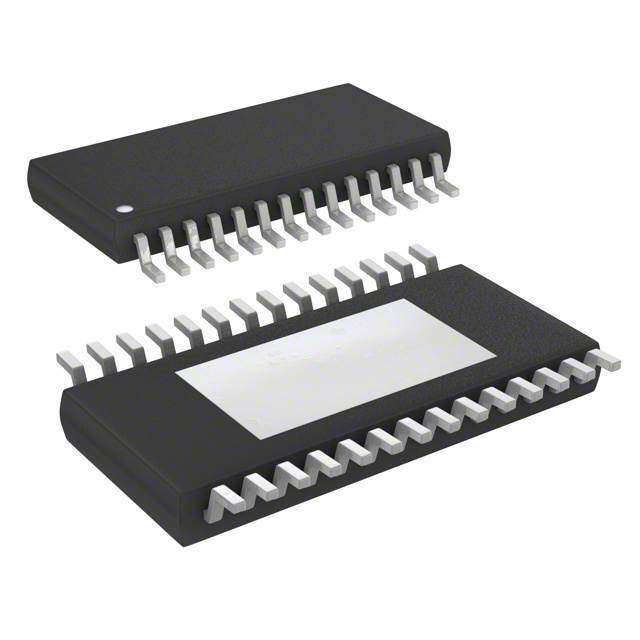ICGOO在线商城 > 集成电路(IC) > PMIC - 电机驱动器,控制器 > TC647VOA
- 型号: TC647VOA
- 制造商: Microchip
- 库位|库存: xxxx|xxxx
- 要求:
| 数量阶梯 | 香港交货 | 国内含税 |
| +xxxx | $xxxx | ¥xxxx |
查看当月历史价格
查看今年历史价格
TC647VOA产品简介:
ICGOO电子元器件商城为您提供TC647VOA由Microchip设计生产,在icgoo商城现货销售,并且可以通过原厂、代理商等渠道进行代购。 TC647VOA价格参考¥询价-¥询价。MicrochipTC647VOA封装/规格:PMIC - 电机驱动器,控制器, Motor Driver Parallel 8-SOIC。您可以下载TC647VOA参考资料、Datasheet数据手册功能说明书,资料中有TC647VOA 详细功能的应用电路图电压和使用方法及教程。
| 参数 | 数值 |
| 产品目录 | 集成电路 (IC)半导体 |
| 描述 | IC MOTOR CONTROLLER PAR 8SOIC马达/运动/点火控制器和驱动器 w/Fault Dtct |
| 产品分类 | PMIC - 电机, 电桥式驱动器集成电路 - IC |
| 品牌 | Microchip Technology |
| 产品手册 | |
| 产品图片 |
|
| rohs | 符合RoHS无铅 / 符合限制有害物质指令(RoHS)规范要求 |
| 产品系列 | 电源管理 IC,马达/运动/点火控制器和驱动器,Microchip Technology TC647VOA- |
| 数据手册 | http://www.microchip.com/mymicrochip/filehandler.aspx?ddocname=en011601 |
| 产品型号 | TC647VOA |
| 产品 | Fan / Motor Controllers / Drivers |
| 产品种类 | 马达/运动/点火控制器和驱动器 |
| 供应商器件封装 | 8-SOIC N |
| 功能 | 控制器 - 换向,方向管理 |
| 包装 | 管件 |
| 商标 | Microchip Technology |
| 安装类型 | 表面贴装 |
| 安装风格 | SMD/SMT |
| 封装 | Tube |
| 封装/外壳 | 8-SOIC(0.154",3.90mm 宽) |
| 封装/箱体 | SOIC-8 |
| 工作温度 | - 40 C to + 85 C |
| 工作电源电压 | 3 V to 5.5 V |
| 工厂包装数量 | 100 |
| 应用 | 风扇控制器 |
| 接口 | 并联 |
| 标准包装 | 100 |
| 电压-电源 | 3 V ~ 5.5 V |
| 电压-负载 | - |
| 电机类型-AC,DC | 无刷 DC(BLDC) |
| 电机类型-步进 | - |
| 电流-输出 | - |
| 电源电流 | 1 mA |
| 类型 | Controller - PWM Fan |
| 输出配置 | 前级驱动器 |


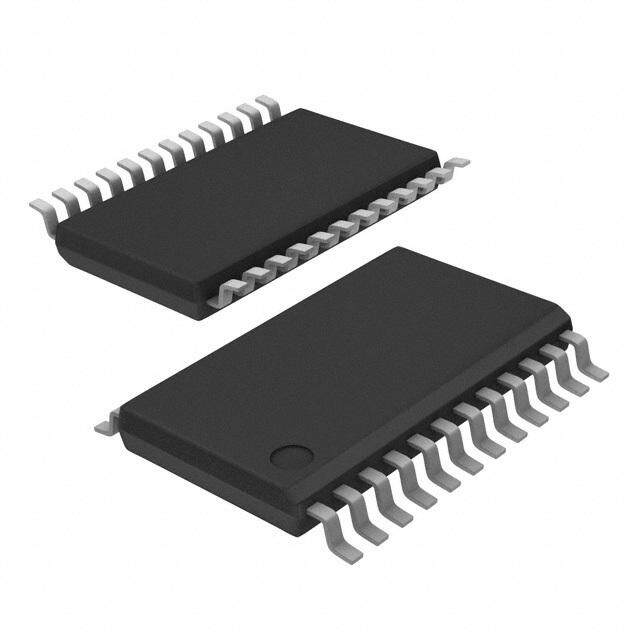
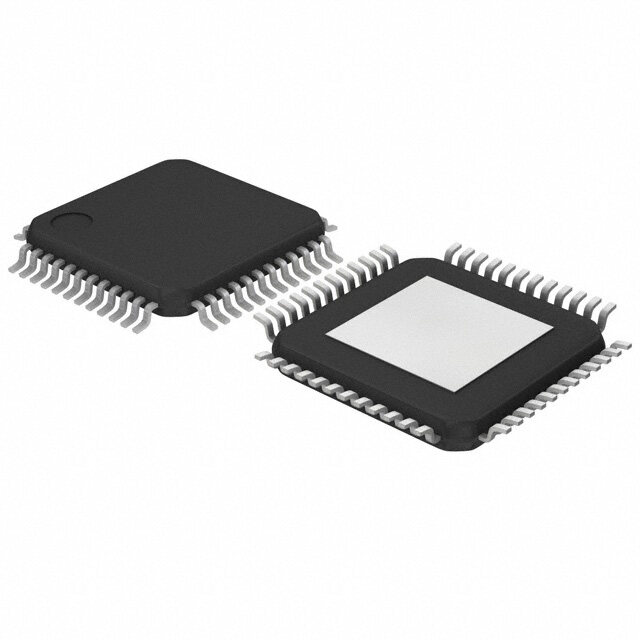
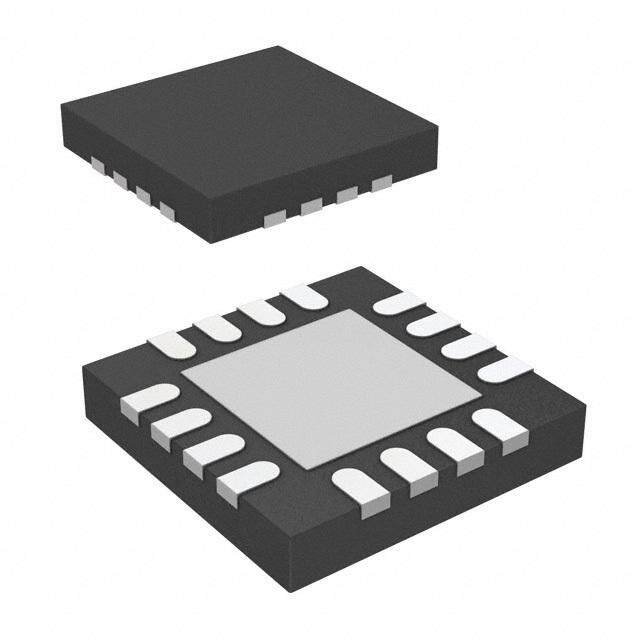
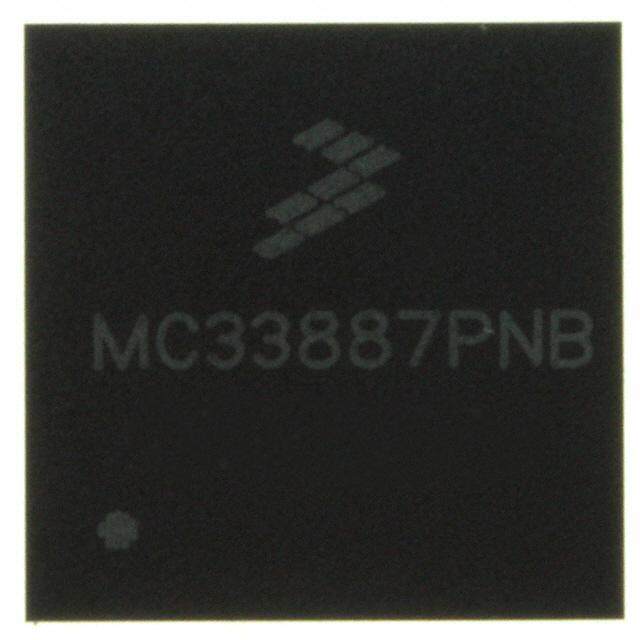

- 商务部:美国ITC正式对集成电路等产品启动337调查
- 曝三星4nm工艺存在良率问题 高通将骁龙8 Gen1或转产台积电
- 太阳诱电将投资9.5亿元在常州建新厂生产MLCC 预计2023年完工
- 英特尔发布欧洲新工厂建设计划 深化IDM 2.0 战略
- 台积电先进制程称霸业界 有大客户加持明年业绩稳了
- 达到5530亿美元!SIA预计今年全球半导体销售额将创下新高
- 英特尔拟将自动驾驶子公司Mobileye上市 估值或超500亿美元
- 三星加码芯片和SET,合并消费电子和移动部门,撤换高东真等 CEO
- 三星电子宣布重大人事变动 还合并消费电子和移动部门
- 海关总署:前11个月进口集成电路产品价值2.52万亿元 增长14.8%

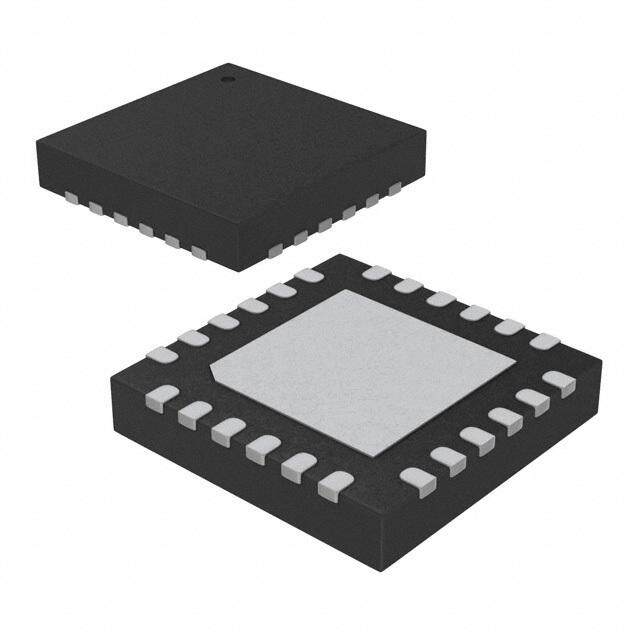
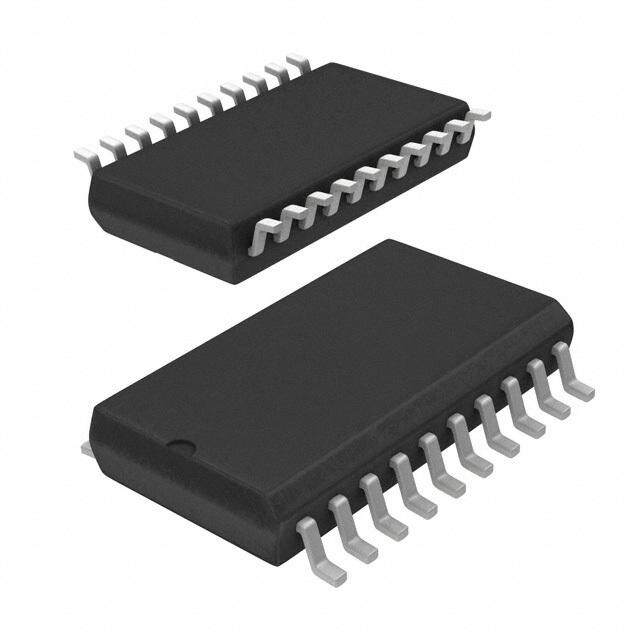

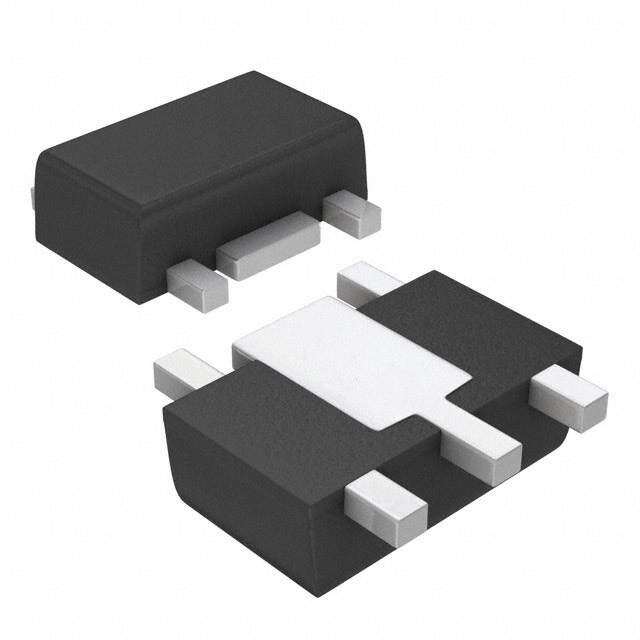
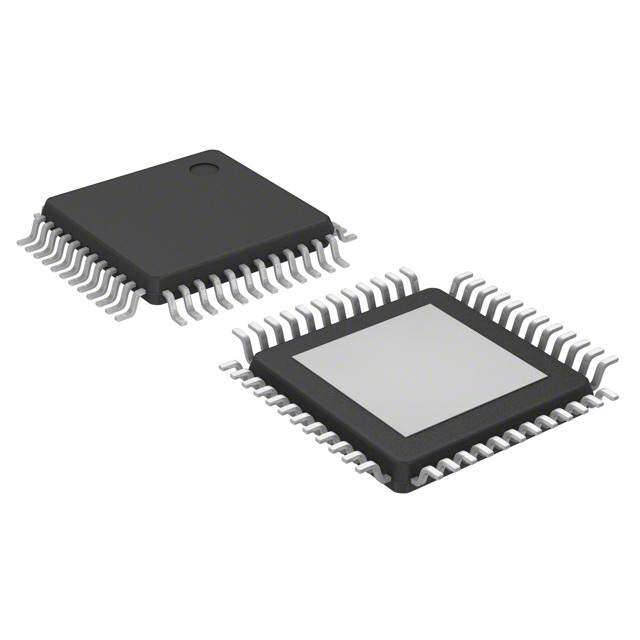
PDF Datasheet 数据手册内容提取
TC647 ™ PWM Fan Speed Controller with FanSense Technology Features Package Types • Temperature Proportional Fan Speed for Acoustic SOIC/PDIP/MSOP Control and Longer Fan Life • Efficient PWM Fan Drive VIN 1 8 VDD • 3.0V to 5.5V Supply Range: CF 2 TC647 7 VOUT - Fan Voltage Independent of TC647 Supply Voltage VMIN 3 6 FAULT - Supports any Fan Voltage GND 4 5 SENSE • FanSense™ Technology Fault Detection Circuits Protect Against Fan Failure and Aid System Testing General Description • Shutdown Mode for "Green" Systems The TC647 is a switch mode, fan speed controller for • Supports Low Cost NTC/PTC Thermistors use with brushless DC fans. Temperature proportional • Space Saving 8-Pin MSOP Package speed control is accomplished using pulse width mod- Applications ulation (PWM). A thermistor (or other voltage output temperature sensor) connected to V furnishes the IN • Power Supplies required control voltage of 1.25V to 2.65V (typical) for • Personal Computers 0% to 100% PWM duty cycle. Minimum fan speed is set by a simple resistor divider on the V input. An • File Servers MIN integrated Start-up Timer ensures reliable motor start- • Telecom Equipment up at turn-on, coming out of shutdown mode or • UPSs, Power Amps following a transient fault. A logic low applied to V MIN • General Purpose Fan Speed Control (Pin 3) causes fan shutdown. The TC647 also features Microchip Technology's pro- Available Tools prietary FanSense™ technology for increasing system • Fan Controller Demonstration Board (TC642DEMO) reliability. In normal fan operation, a pulse train is pres- ent at SENSE (Pin 5). A missing pulse detector moni- • Fan Controller Evaluation Kit (TC642EV) tors this pin during fan operation. A stalled, open or unconnected fan causes the TC647 to trigger its Start- up Timer once. If the fault persists, the FAULT output goes low and the device is latched in its shutdown mode. The TC647 is available in the 8-pin plastic DIP, SOIC and MSOP packages and is available in the industrial and extended commercial temperature ranges. 2001-2012 Microchip Technology Inc. DS21447D-page 1
TC647 Functional Block Diagram VIN – VDD + – SHDN + Control Logic VOUT CF 3 x TPWM Timer Clock Generator FAULT Start-up VMIN + Timer VSHDN – Missing Pulse Detect. TC647 + – 10kΩ SENSE GND 70mV (typ.) DS21447D-page 2 2001-2012 Microchip Technology Inc.
TC647 1.0 ELECTRICAL *Stresses above those listed under "Absolute Maximum Rat- ings" may cause permanent damage to the device. These are CHARACTERISTICS stress ratings only and functional operation of the device at these or any other conditions above those indicated in the Absolute Maximum Ratings* operation sections of the specifications is not implied. Expo- Supply Voltage.........................................................6V sure to absolute maximum rating conditions for extended peri- ods may affect device reliability. Input Voltage, Any Pin....(GND – 0.3V) to (V +0.3V) DD Package Thermal Resistance: PDIP (R ).............................................125°C/W JA SOIC (R )............................................155°C/W JA MSOP (R )..........................................200°C/W JA Specified Temperature Range............-40°C to +125°C Storage Temperature Range..............-65°C to +150°C DC ELECTRICAL SPECIFICATIONS Electrical Characteristics: Unless otherwise specified, T < T < T , V = 3.0V to 5.5V. MIN A MAX DD Symbol Parameter Min Typ Max Units Test Conditions V Supply Voltage 3.0 — 5.5 V DD I Supply Current, Operating — 0.5 1 mA Pins 6, 7 Open, DD C = 1µF, V = V F IN C(MAX) I Supply Current, — 25 — µA Pins 6, 7 Open, DD(SHDN) Shutdown Mode C = 1µF, V = 0.35V F MIN I V ,V Input Leakage – 1.0 — +1.0 µA Note1 IN IN MIN V Output OUT t V Rise Time — — 50 µsec I = 5mA, Note1 R OUT OH t V Fall Time — — 50 µsec I = 1mA, Note1 F OUT OL t Pulse Width (On V ) to Clear 30 — — µsec V , V SHDN MIN SHDN HYST Fault Mode Specifications, Note1 I Sink Current at V Output 1.0 — — mA V = 10% of V OL OUT OL DD I Source Current at V Output 5.0 — — mA V = 80% of V OH OUT OH DD V , V Inputs IN MIN V Input Voltage at V or V for 2.5 2.65 2.8 V C(MAX) IN MIN 100% PWM Duty Cycle V V - V 1.3 1.4 1.5 V C(SPAN) C(MAX) C(MIN) V Voltage Applied to V to — — V x 0.13 V SHDN MIN DD Ensure Shutdown Mode V Voltage Applied to V to V x 0.19 — — V V = 5V REL MIN DD DD Release Shutdown Mode Pulse Width Modulator F PWM Frequency 26 30 34 Hz C = 1.0µF PWM F SENSE Input V SENSE Input Threshold 50 70 90 mV Note1 TH(SENSE) Voltage with Respect to GND FAULT Output V Output Low Voltage — — 0.3 V I = 2.5mA OL OL t Missing Pulse Detector Timer — 32/F — Sec MP t Start-up Timer — 32/F — Sec STARTUP t Diagnostic Timer — 3/F — Sec DIAG Note 1: Ensured by design, not tested. 2001-2012 Microchip Technology Inc. DS21447D-page 3
TC647 2.0 PIN DESCRIPTIONS 2.3 Analog Input (V ) MIN The descriptions of the pins are listed in Table2-1. An external resistor divider connected to the VMIN input sets the minimum fan speed by fixing the minimum TABLE 2-1: PIN FUNCTION TABLE PWM duty cycle (1.25V to 2.65V = 0% to 100%, typi- cal). The TC647 enters shutdown mode when V MIN Pin No. Symbol Description V . During shutdown, the FAULT output is inactive SHDN 1 V Analog Input and supply current falls to 25µA (typical). The TC647 IN exits shutdown mode when V V . See 2 C Analog Output MIN REL F Section5.0, “Typical Applications”, for more details. 3 V Analog Input MIN 4 GND Ground Terminal 2.4 Ground (GND) 5 SENSE Analog Input GND denotes the ground terminal. 6 FAULT Digital (Open Collector) Output 2.5 Analog Input (SENSE) 7 V Digital Output OUT 8 VDD Power Supply Input Pulses are detected at the SENSE pin as fan rotation chops the current through a sense resistor. The 2.1 Analog Input (VIN) absence of pulses indicates a fault. The thermistor network (or other temperature sensor) 2.6 Digital Output (FAULT) connects to the V input. A voltage range of 1.25V to IN 2.65V (typical) on this pin drives an active duty cycle of The FAULT line goes low to indicate a fault condition. 0% to 100% on the V pin. When FAULT goes low due to a fan fault condition, the OUT device is latched in shutdown mode until deliberately 2.2 Analog Output (CF) cleared or until power is cycled. FAULT may be con- nected to V if a hard shutdown is desired. C is the positive terminal for the PWM ramp generator MIN F timing capacitor. The recommended CF is 1µF for 2.7 Digital Output (V ) OUT 30Hz PWM operation. V is an active high complimentary output that drives OUT the base of an external NPN transistor (via an appropri- ate base resistor) or the gate of an N-channel MOS- FET. This output has asymmetrical drive (see Section1.0, “Electrical Characteristics”). 2.8 Power Supply Input (V ) DD V may be independent of the fan’s power supply DD (see Section1.0, “Electrical Characteristics”). DS21447D-page 4 2001-2012 Microchip Technology Inc.
TC647 3.0 DETAILED DESCRIPTION CAUTION: Shutdown mode is unconditional. That is, the fan will not be activated regardless of the voltage 3.1 PWM at V . The fan should not be shut down until all heat IN The PWM circuit consists of a ramp generator and producing activity in the system is at a negligible threshold detector. The frequency of the PWM is deter- level. mined by the value of the capacitor connected to the C F 3.5 SENSE Input input. A frequency of 30Hz is recommended (FanSense™ Technology) (C = 1µF). The PWM is also the time base for the F Start-up Timer (see Section3.3, “Start-Up Timer”). The The SENSE input (Pin 5) is connected to a low value PWM voltage control range is 1.25V to 2.65V (typical) current sensing resistor in the ground return leg of the for 0% to 100% output duty cycle. fan circuit. During normal fan operation, commutation occurs as each pole of the fan is energized. This 3.2 V Output OUT causes brief interruptions in the fan current, seen as The V pin is designed to drive a low cost transistor pulses across the sense resistor. If the device is not in OUT or MOSFET as the low side power switching element in shutdown mode, and pulses are not appearing at the the system. Various examples of driver circuits will be SENSE input, a fault exists. shown throughout this data sheet. This output has an The short, rapid change in fan current (high dI/dt) asymmetric complimentary drive and is optimized for causes a corresponding dV/dt across the sense driving NPN transistors or N-channel MOSFETs. Since resistor, R . The waveform on R is SENSE SENSE the system relies on PWM rather than linear control, differentiated and converted to a logic-level, pulse-train the power dissipation in the power switch is kept to a by C and the internal signal processing circuitry. SENSE minimum. Generally, very small devices (TO-92 or SOT The presence and frequency of this pulse-train is a packages) will suffice. direct indication of fan operation. See Section5.0, “Typical Applications”, for more details. 3.3 Start-Up Timer 3.6 FAULT Output To ensure reliable fan start-up, the Start-up Timer turns the VOUT output on for 32 cycles of the PWM whenever Pulses appearing at SENSE due to the PWM turning the fan is started from the off state. This occurs at on are blanked with the remaining pulses being filtered power up and when coming out of shutdown mode. If by a missing pulse detector. If consecutive pulses are the PWM frequency is 30Hz (CF = 1µF), the resulting not detected for 32 PWM cycles (1Sec if CF = 1µF), start-up time will be approximately one second. If a the Diagnostic Timer is activated and V is driven OUT fault is detected, the Diagnostic Timer is triggered high continuously for three PWM cycles (100msec if once, followed by the Start-up Timer. If the fault C = 1µF). If a pulse is not detected within this window, F persists, the device is shut down (see Section3.6, the Start-up Timer is triggered (see Section3.3, “Start- “FAULT Output”). Up Timer”). This should clear a transient fault condition. If the missing pulse detector times out again, the PWM 3.4 Shutdown Control (Optional) is stopped and FAULT goes low. When FAULT is activated due to this condition, the device is latched in If V (Pin 3) is pulled below V , the TC647 will go MIN SHDN shutdown mode and will remain off indefinitely. into shutdown mode. This can be accomplished by driving V with an open-drain logic signal or using an MIN Note: At this point, action must be taken to restart external transistor, as shown in Figure3-1. All functions the fan by momentarily pulling V below are suspended until the voltage on V becomes MIN MIN V , or cycling system power. In either higher than V (0.85V @ V = 5.0V). Pulling V SHDN REL DD MIN case, the fan cannot remain disabled due below V will always result in complete device SHDN to a fault condition as severe system dam- shutdown and reset. The FAULT output is age could result. If the fan cannot be unconditionally inactive in shutdown mode. restarted, the system should be shut down. A small amount of hysteresis, typically one percent of The TC647 may be configured to continuously attempt V (50mV at V = 5.0V), is designed into the V / DD DD SHDN fan restarts, if so desired. V threshold. The levels specified for V and REL SHDN V in Section1.0, “Electrical Characteristics”, REL include this hysteresis plus adequate margin to account for normal variations in the absolute value of the threshold and hysteresis. 2001-2012 Microchip Technology Inc. DS21447D-page 5
TC647 Continuous restart mode is enabled by connecting the condition. Normal fan start-up is then attempted as pre- FAULT output to V through a 0.1µF capacitor, as viously described. The FAULT output may be MIN shown in Figure3-1. When so connected, the TC647 connected to external logic (or the interrupt input of a automatically attempts to restart the fan whenever a microcontroller) to shut the TC647 down if multiple fault fault condition occurs. When the FAULT output is pulses are detected at approximately one second driven low, the V input is momentarily pulled below intervals. MIN V , initiating a reset and clearing the fault SHDN +5V 10 kΩ C1 0.01µF +5V +12V 1 kΩ CB TC647 1µF RESET 8 Fan From 1 Temp VIN VDD 6 1 FAULT Sensor 0 Q1 +5V Fault Detected TC647 RBASE R3 VOUT 7 3 VMIN CB 5 ShSuytsdFtoreowmmn (ORpt1ional) Q2 R4 0.01 CµFF 2 CF GND SENSE CSENSE RSENSE Controller 1 µF 4 Note: The parallel combination of R3 and R4 must be >10 kΩ. FIGURE 3-1: Fan Fault Output Circuit. DS21447D-page 6 2001-2012 Microchip Technology Inc.
TC647 4.0 SYSTEM BEHAVIOR 4.3 Fan Fault The flowcharts describing the TC647’s behavioral Fan Fault is an infinite loop wherein the TC647 is algorithm are shown in Figure4-1. They can be latched in shutdown mode. This mode can only be summarized as follows: released by a reset (i.e., VMIN being brought below V , then above V , or by power cycling). SHDN REL 4.1 Power-Up (1) While in this state, FAULT is latched on (low) and (1) Assuming the device is not being held in shutdown the VOUT output is disabled. mode (VMIN > VREL)… (2) A reset sequence applied to the VMIN pin will exit (2) Turn V output on for 32 cycles of the PWM the loop to Power-up. OUT clock. This ensures that the fan will start from a (3) End. dead stop. (3) During this Start-up Timer, if a fan pulse is detected, branch to Normal Operation; if none are received… (4) Activate the 32-cycle Start-up Timer one more time and look for fan pulse; if a fan pulse is detected, proceed to Normal Operation; if none are received… (5) Proceed to Fan Fault. (6) End. 4.2 Normal Operation Normal Operation is an endless loop which may only be exited by entering shutdown mode or Fan Fault. The loop can be thought of as executing at the frequency of the oscillator and PWM. (1) Reset the missing pulse detector. (2) Is TC647 in shutdown? If so… a. V duty cycle goes to zero. OUT b. FAULT is disabled. c. Exit the loop and wait for V > V to resume MIN REL operation (indistinguishable from Power-up). (3) Drive V to a duty cycle proportional to greater OUT of V and V on a cycle by cycle basis. IN MIN (4) If a fan pulse is detected, branch back to the start of the loop (1). (5) If the missing pulse detector times out … (6) Activate the 3-cycle Diagnostic Timer and look for pulses; if a fan pulse is detected, branch back to the start of the loop (1); if none are received… (7) Activate the 32-cycle Start-up Timer and look for pulses; if a fan pulse is detected, branch back to the start of the loop (1); if none are received… (8) Quit Normal Operation and go to Fan Fault. (9) End. 2001-2012 Microchip Technology Inc. DS21447D-page 7
TC647 Normal Power-Up Operaton Power-on Clear Reset Missing Pulse FAULT = 1 Detector Yes Shutdown VMIN < VSHDN VOUT = 0 Yes Shutdown No No VMIN < VSHDN? VOUT = 0 VMIN > VREL? No No VMIN > VREL Yes Fire Start-up Yes Timer (1 SEC) Power-up Fire Start-up Yes Fan Fault TimYeErS Detected? (1 SEC) Yes Fan Pulse No Detected? VOUT Proportional to Greater ONpoerrmataioln No of VIN or VMIN Fan Fault Yes No Fan Pulse Detected? M.P.D. Fan Fault No Expired? Yes Fire Diagnostic Timer FAULT = 0, (100msec) VOUT = 0 Yes No Fire Start-up No Fan Pulse Timer Detected? (1 SEC) No Cycling VMIN < VSHDN? Power? Yes Yes Fan Pulse Yes Detected? No No VMIN > VREL? Fan Fault Yes Power-up FIGURE 4-1: TC647 Behavioral Algorithm Flowchart. DS21447D-page 8 2001-2012 Microchip Technology Inc.
TC647 5.0 TYPICAL APPLICATIONS The TC642 demonstration and prototyping board (TC642DEMO) and the TC642 Evaluation Kit Designing with the TC647 involves the following: (TC642EV) provide working examples of TC647 cir- (1) The temp sensor network must be configured to cuits and prototyping aids. The TC642DEMO is a deliver 1.25V to 2.65V on V for 0% to 100% of printed circuit board optimized for small size and ease IN the temperature range to be regulated. of inclusion into system prototypes. The TC642EV is a larger board intended for benchtop development and (2) The minimum fan speed (V ) must be set. MIN analysis. At the very least, anyone contemplating a (3) The output drive transistor and associated circuitry design using the TC647 should consult the documenta- must be selected. tion for both TC642EV and (DS21403) and (4) The SENSE network, R and C , must TC642DEMO (DS21401). Figure5-1 shows the base SENSE SENSE be designed for maximum efficiency while schematic for the TC642DEMO. delivering adequate signal amplitude. (5) If shutdown capability is desired, the drive require- ments of the external signal or circuit must be considered. +5V* CB +12V 1 µF R1 NTC 8 Fan 1 VIN VDD CB R2 0.01 µF FAULT 6 FSahnu tFdaouwlnt Q1 RBASE TC647 7 R3 VOUT 3 VMIN CB 5 0.01 µF SENSE 2 Shutdown R4 CF CSENSE CF GND RSENSE (Optional) 1 µF 4 Note: *See cautions regarding latch-up considerations in Section 5.0, "Typical Applications". FIGURE 5-1: Typical Application Circuit. 2001-2012 Microchip Technology Inc. DS21447D-page 9
TC647 5.1 Temperature Sensor Design EQUATION The temperature signal connected to V must output a V x R IN DD 2 = V(T ) voltage in the range of 1.25V to 2.65V (typical) for 0% 1 R (T ) + R TEMP 1 2 to 100% of the temperature range of interest. The circuit in Figure5-2 illustrates a convenient way to V x R DD 2 provide this signal. = V(T2) R (T ) + R TEMP 2 2 VDD Where T1 and T2 are the chosen temperatures and R is the parallel combination of the thermistor TEMP IDIV and R1. These two equations facilitate solving for the two unknown variables, R and R . More information about 1 2 Thermistors may be obtained from AN679, “Tempera- RT1 R1 = 100 kΩ NTC ture Sensing Technologies”, and AN685, “Thermistors Thermistor in Single Supply Temperature Sensing Circuits”, which 100 kΩ @ 25ºC VIN can be downloaded from Microchip’s website at www.microchip.com. R2 = 23.2 kΩ 5.2 Minimum Fan Speed A voltage divider on V sets the minimum PWM duty MIN cycle and, thus, the minimum fan speed. As with the V input, 1.25V to 2.65V corresponds to 0% to 100% FIGURE 5-2: Temperature Sensing IN duty cycle. Assuming that fan speed is linearly related Circuit. to duty cycle, the minimum speed voltage is given by Figure5-2 illustrates a simple temperature dependent the equation: voltage divider circuit. RT is a conventional 100 k @ 1 25°C NTC thermistor, while R and R are standard EQUATION 1 2 resistors. The supply voltage, V , is divided between DD Minimum Speed R2 and the parallel combination of RT1 and R1 (for con- VMIN = x (1.4V) + 1.25V venience, the parallel combination of RT and R will Full Speed 1 1 be referred to as R ). The resistance of the therm- TEMP For example, if 2500RPM equates to 100% fan speed, istor at various temperatures is obtained from the man- and a minimum speed of 1000RPM is desired, then ufacturer’s specifications. Thermistors are often the V voltage is: referred to in terms of their resistance at 25°C. Gener- MIN ally, the thermistor shown in Figure5-2 is a non-linear EQUATION device with a negative temperature coefficient (also called an NTC thermistor). In Figure5-2, R is used to 1 1000 linearize the thermistor temperature response and R2 VMIN = 2500 x (1.4V) + 1.25V = 1.81V is used to produce a positive temperature coefficient at the V node. As an added benefit, this configuration IN The V voltage may be set using a simple resistor produces an output voltage delta of 1.4V, which is well MIN divider as shown in Figure5-3. Per Section1.0, within the range of the V specification of the C(SPAN) “Electrical Characteristics”, the leakage current at the TC647. A 100kNTC thermistor is selected for this V pin is no more than 1µA. It would be very application in order to keep I at a minimum. MIN DIV conservative to design for a divider current, I , of DIV For the voltage range at VIN to be equal to 1.25V to 100µA. If VDD = 5.0V then; 2.65V, the temperature range of this configuration is 0°C to 50°C. If a different temperature range is required EQUATION from this circuit, R should be chosen to equal the 1 resistance value of the thermistor at the center of this 5.0V new temperature range. It is suggested that a maxi- I = 1e–4A = , therefore DIV mum temperature range of 50°C be used with this cir- R1 + R2 cuit due to thermistor linearity limitations. With this 5.0V R + R = = 50,000 = 50 k change, R2 is adjusted according to the following 1 2 1e–4A equations: DS21447D-page 10 2001-2012 Microchip Technology Inc.
TC647 V output is “off” most of the time. The fan may be OUT VDD rotating normally, but the commutation events are occurring during the PWM’s off-time. The phase relationship between the fan’s commutation and the PWM edges tends to “walk around” as the system operates. At certain points, the TC647 may fail to capture a pulse within the 32-cycle missing pulse R1 IIN detector window. When this happens, the 3-cycle Diagnostic Timer will be activated, the V output will OUT IDIV VMIN be active continuously for three cycles and, if the fan is operating normally, a pulse will be detected. If all is well, the system will return to normal operation. There R2 is no harm in this behavior, but it may be audible to the user as the fan will accelerate briefly when the Diagnostic Timer fires. For this reason, it is recommended that V be set no lower than 1.8V. GND MIN FIGURE 5-3: V Circuit. 5.4 FanSense™ Network MIN (R and C ) We can further specify R and R by the condition that SENSE SENSE 1 2 the divider voltage is equal to our desired VMIN. This The FanSense network, comprised of RSENSE and yields the following equation: C , allows the TC647 to detect commutation of SENSE the fan motor (FanSense™ technology). This network EQUATION can be thought of as a differentiator and threshold detector. The function of R is to convert the fan V x R SENSE DD 2 current into a voltage. C serves to AC-couple this V = SENSE MIN R + R voltage signal and provide a ground referenced input to 1 2 the SENSE pin. Designing a proper SENSE network is Solving for the relationship between R1 and R2 results simply a matter of scaling RSENSE to provide the in the following equation: necessary amount of gain (i.e., the current-to-voltage conversion ratio). A 0.1µF ceramic capacitor is recom- mended for C . Smaller values require larger EQUATION SENSE sense resistors, and higher value capacitors are bulkier V - V and more expensive. Using a 0.1µF results in DD MIN R1 = R2 x V reasonable values for RSENSE. Figure5-4 illustrates a MIN typical SENSE network. Figure5-5 shows the waveforms observed using a typical SENSE network. In this example, R = (1.762) R . Substituting this rela- 1 2 tionship back into the previous equation yields the resistor values: VDD R = 18.1k 2 R = 31.9k 1 In this case, the standard values of 31.6k and 18.2k are very close to the calculated values and FAN would be more than adequate. 5.3 Operations at Low Duty Cycle RBASE VOUT Q1 One boundary condition which may impact the selec- tion of the minimum fan speed is the irregular activation SENSE of the Diagnostic Timer due to the TC647 “missing” fan commutation pulses at low speeds. This is a natural CSENSE consequence of low PWM duty cycles (typically 25% or (0.1 µF Typ.) RSENSE less). Recall that the SENSE function detects commu- tation of the fan as disturbances in the current through R . These can only occur when the fan is ener- SENSE GND gized (i.e., V is “on”). At very low duty cycles, the OUT FIGURE 5-4: SENSE Network. 2001-2012 Microchip Technology Inc. DS21447D-page 11
TC647 5.5 Output Drive Transistor Selection Tek Run: 10.0kS/s Sample The TC647 is designed to drive an external transistor [ T ] or MOSFET for modulating power to the fan. This is shown as Q in Figures3-1,5-1,5-4,5-6,5-7,5-8 1 and5-9. The V pin has a minimum source current OUT of 5mA and a minimum sink current of 1mA. Bipolar transistors or MOSFETs may be used as the power switching element, as shown in Figure5-7. When high Waveform @ Sense Resistor 1 GND current gain is needed to drive larger fans, two transis- Waveform @ Sense Pin tors may be used in a Darlington configuration. These 90mV circuit topologies are shown in Figure5-7: (a) shows a T 50mV single NPN transistor used as the switching element; 2 GND (b) illustrates the Darlington pair; and (c) shows an N- channel MOSFET. One major advantage of the TC647’s PWM control Ch1 100mV Ch2 100mV M5.00ms Ch1 142mV scheme versus linear speed control is that the power dissipation in the pass element is kept very low. Gener- ally, low cost devices in very small packages, such as FIGURE 5-5: SENSE Waveforms. TO-92 or SOT, can be used effectively. For fans with Table5-1 lists the recommended values of RSENSE nominal operating currents of no more than 200mA, a based on the nominal operating current of the fan. Note single transistor usually suffices. Above 200mA, the that the current draw specified by the fan manufacturer Darlington or MOSFET solution is recommended. For may be a worst-case rating for near-stall conditions and the fan sensing function to work correctly, it is impera- not the fan’s nominal operating current. The values in tive that the pass transistor be fully saturated when Table5-1 refer to actual average operating current. If “on”. the fan current falls between two of the values listed, Table5-2 gives examples of some commonly available use the higher resistor value. The end result of employ- transistors and MOSFETs. This table should be used ing Table5-1 is that the signal developed across the as a guide only since there are many transistors and sense resistor is approximately 450mV in amplitude. MOSFETs which will work just as well as those listed. The critical issues when choosing a device to use as TABLE 5-1: R VS. FAN CURRENT SENSE Q1 are: (1) the breakdown voltage (V(BR)CEO or Nominal Fan Current (mA) RSENSE () VDS(MOSFET)) must be large enough to withstand the highest voltage applied to the fan (Note: This will occur 50 9.1 when the fan is off); (2) 5 mA of base drive current must 100 4.7 be enough to saturate the transistor when conducting 150 3.0 the full fan current (transistor must have sufficient 200 2.4 gain); (3) the VOUT voltage must be high enough to suf- ficiently drive the gate of the MOSFET to minimize the 250 2.0 RDS(on) of the device; (4) rated fan current draw must 300 1.8 be within the transistor's/MOSFET's current handling 350 1.5 capability; and (5) power dissipation must be kept within the limits of the chosen device. 400 1.3 A base-current limiting resistor is required with bipolar 450 1.2 transistors. This is shown in Figure5-6. 500 1.0 DS21447D-page 12 2001-2012 Microchip Technology Inc.
TC647 The correct value for this resistor can be determined as VDD follows: V = V + V + V OH RSENSE BE(SAT) RBASE V = I x R RSENSE FAN SENSE V = R x I RBASE BASE BASE Fan I = I / h BASE FAN FE V is specified as 80% of V in Section1.0, OH DD “Electrical Characteristics”; V is given in the cho- RBASE sen transistor data sheet. It isB nEo(SwAT p)ossible to solve for VOH = 80% VDD + VRBASE – Q1 RBASE. + VBE(SAT) – EQUATION + VRSENSE RSENSE R = VOH - VBE(SAT) - VRSENSE – BASE I BASE Some applications require the fan to be powered from the GND negative 12V supply to keep motor noise out of the FIGURE 5-6: Circuit For Determining positive voltage power supplies. As shown in Figure5-8, RBASE. zener diode D1 offsets the -12V power supply voltage, holding transistor Q off when V is low. When V is 1 OUT OUT high, the voltage at the anode of D increases by V 1 OUT causing Q to turn on. Operation is otherwise the same as 1 the case of fan operation from +12V. TABLE 5-2: TRANSISTORS AND MOSFETS FOR Q (V = 5V) 1 DD Max. V /V V /V Fan Current Suggested Device Package BE(sat) GS Min. H CEO DS (V) FE (V) (mA) R () BASE MMBT2222A SOT-23 1.2 50 40 150 800 MPS2222A TO-92 1.2 50 40 150 800 MPS6602 TO-92 1.2 50 40 500 301 SI2302 SOT-23 2.5 NA 20 500 Note1 MGSF1N02E SOT-23 2.5 NA 20 500 Note1 SI4410 SO-8 4.5 NA 30 1000 Note1 SI2308 SOT-23 4.5 NA 60 500 Note1 Note 1: A series gate resistor may be used in order to control the MOSFET turn-on and turn-off times. 2001-2012 Microchip Technology Inc. DS21447D-page 13
TC647 VDD VDD VDD Fan Fan Fan VOUT RBASE Q1 VOUT RBASE Q1 VOUT Q1 Q2 RSENSE RSENSE RSENSE GND GND GND a) Single Bipolar Transistor b) Darlington Transistor Pair C) N-Channel MOSFET FIGURE 5-7: Output Drive Transistor Circuit Topologies. ing points can result in enough parasitic capacitance +5V and/or inductance in the power supply connections to delay one power supply “routing” versus another. VDD R2.22 *kΩ 5.7 Power Supply Routing and VOUT Fan Bypassing TC647 D1 12.0V Zener Noise present on the V and V inputs may cause IN MIN Q1 * erroneous operation of the FAULT output. As a result, these inputs should be bypassed with a 0.01µF capac- GND itor mounted as close to the package as possible. This R4 * R3 * 10 kΩ 2.2 Ω is particularly true of V , which is usually driven from a IN high impedance source (such as a thermistor). In addi- tion, the V input should be bypassed with a 1µF DD -12V capacitor. Ground should be kept as short as possible. *Note: Value depends on the specific application and is shown for example only. To keep fan noise off the TC647 ground pin, individual ground returns for the TC647 and the low side of the fan current sense resistor should be used. FIGURE 5-8: Powering the Fan from a -12V Supply. Design Example 5.6 Latch-Up Considerations Step 1. Calculate R and R based on using an NTC 1 2 having a resistance of 10k at T (25°C) As with any CMOS IC, the potential exists for latch-up MIN and 4.65k at T (45°C) (see Figure5-9). if signals are applied to the device which are outside MAX the power supply range. This is of particular concern R1 = 20.5k during power-up if the external circuitry (such as the R2 = 3.83k sensor network, VMIN divider or shutdown circuit) is Step 2. Set minimum fan speed VMIN = 1.8V. powered by a supply different from that of the TC647. Limit the divider current to 100µA from which Care should be taken to ensure that the TC647’s VDD R5 = 33k and R6 = 18k supply powers up first. If possible, the networks Step 3. Design the output circuit. attached to V and V should connect to the V IN MIN DD supply at the same physical location as the IC itself. Maximum fan motor current = 250mA. Even if the IC and any external networks are powered Q1 beta is chosen at 50 from which by the same supply, physical separation of the connect- R7 = 800 DS21447D-page 14 2001-2012 Microchip Technology Inc.
TC647 +5V +5V +12V R1 1N0 TkCΩ C1 BµF+ 20.5 kΩ @ 25°C 8 4 Fan 1 VIN VDD GND CB R2 0.01 µF 6 System 3.83 kΩ FAULT Fault Q1 +5V R7 TC647 800 Ω R5 VOUT 7 33 kΩ 3 VMIN CB 5 0.01 µF SENSE Fan Shutdown Q2 R6 2 CF C0S.E1 NµSFE R8 18 kΩ RSENSE 10 kΩ 2.2 Ω C1 1 µF (Optional) FIGURE 5-9: Design Example. 5.8 TC647 as a Microcontroller Peripheral In a system containing a microcontroller or other host intelligence, the TC647 can be effectively managed as a CPU peripheral. Routine fan control functions can be performed by the TC647 without controller intervention. The microcontroller receives temperature data from one or more points throughout the system. It calculates a fan operating speed based on an algorithm specifically designed for the application at hand. The processor controls fan speed using complimentary port bits I/O1 through I/O3. Resistors R through R (5% tolerance) 1 6 form a crude 3-bit DAC that translates the 3-bit code from the controller or processor's outputs into a 1.6V DC control signal. A monolithic DAC or digital pot may be used instead of the circuit shown in Figure5-10. With V set to 1.8V, the TC647 has a minimum MIN operating speed of approximately 40% of full rated speed when the processor's output code is 000[B]. Output codes 001[B] to 111[B] operate the fan from roughly 40% to 100% of full speed. An open-drain output from the processor I/O can be used to reset the TC647 following detection of a fault condition. The FAULT output can be connected to the processor's interrupt input, or to an I/O pin, for polled operation (see Figure5-10). 2001-2012 Microchip Technology Inc. DS21447D-page 15
TC647 +12V +5V Open-drain I/O0(RESET)(Optional) Outputs +5V Fan R1 (MSB)110 kΩ 1 8 DAantaaTl ofergmo mopre oDranigteui troaerl OCuMtpOutSs II//OO21 240 kRΩ2 .01 CμFB 2 VIN VDD17 CμFB +8R009Ω more Sensors R3 + CF VOUT 2N2222A I/O3(LSB)360 kΩ R4 R7 1 μF TC647 +5RV10 MicrCocMoOntSroller +5V1.5 kRΩ5 18 kΩ+5V1383 kRkΩΩ8 .0C1 BμF3 VMIN FAULT56 01.01 kμΩF R6 4 GND SENSE 1 kΩ R11 2.2Ω GND INT FIGURE 5-10: TC647 as a Microcontroller Peripheral. DS21447D-page 16 2001-2012 Microchip Technology Inc.
TC647 6.0 PACKAGING INFORMATION 6.1 Package Marking Information 8-Lead PDIP (300 mil) Example: XXXXXXXX TC647VPA NNN 025 YYWW 0215 8-Lead SOIC (150 mil) Example: XXXXXXXX TC647VOA YYWW 0215 NNN 025 8-Lead MSOP Example: XXXXXX TC647E YWWNNN 215025 Legend: XX...X Customer-specific information Y Year code (last digit of calendar year) YY Year code (last 2 digits of calendar year) WW Week code (week of January 1 is week ‘01’) NNN Alphanumeric traceability code e3 Pb-free JEDEC designator for Matte Tin (Sn) * This package is Pb-free. The Pb-free JEDEC designator ( e 3 ) can be found on the outer packaging for this package. Note: In the event the full Microchip part number cannot be marked on one line, it will be carried over to the next line, thus limiting the number of available characters for customer-specific information. 2001-2012 Microchip Technology Inc. DS21447D-page 17
TC647 8-Lead Plastic Dual In-line (P) – 300 mil (PDIP) Note: For the most current package drawings, please see the Microchip Packaging Specification located at http://www.microchip.com/packaging E1 D 2 n 1 E A A2 L c A1 B1 p eB B Units INCHES* MILLIMETERS Dimension Limits MIN NOM MAX MIN NOM MAX Number of Pins n 8 8 Pitch p .100 2.54 Top to Seating Plane A .140 .155 .170 3.56 3.94 4.32 Molded Package Thickness A2 .115 .130 .145 2.92 3.30 3.68 Base to Seating Plane A1 .015 0.38 Shoulder to Shoulder Width E .300 .313 .325 7.62 7.94 8.26 Molded Package Width E1 .240 .250 .260 6.10 6.35 6.60 Overall Length D .360 .373 .385 9.14 9.46 9.78 Tip to Seating Plane L .125 .130 .135 3.18 3.30 3.43 Lead Thickness c .008 .012 .015 0.20 0.29 0.38 Upper Lead Width B1 .045 .058 .070 1.14 1.46 1.78 Lower Lead Width B .014 .018 .022 0.36 0.46 0.56 Overall Row Spacing § eB .310 .370 .430 7.87 9.40 10.92 Mold Draft Angle Top 5 10 15 5 10 15 Mold Draft Angle Bottom 5 10 15 5 10 15 * Controlling Parameter § Significant Characteristic Notes: Dimensions D and E1 do not include mold flash or protrusions. Mold flash or protrusions shall not exceed .010” (0.254mm) per side. JEDEC Equivalent: MS-001 Drawing No. C04-018 DS21447D-page 18 2001-2012 Microchip Technology Inc.
TC647 8-Lead Plastic Small Outline (SN) – Narrow, 150 mil (SOIC) Note: For the most current package drawings, please see the Microchip Packaging Specification located at http://www.microchip.com/packaging E E1 p D 2 B n 1 h 45× c A A2 f L A1 Units INCHES* MILLIMETERS Dimension Limits MIN NOM MAX MIN NOM MAX Number of Pins n 8 8 Pitch p .050 1.27 Overall Height A .053 .061 .069 1.35 1.55 1.75 Molded Package Thickness A2 .052 .056 .061 1.32 1.42 1.55 Standoff § A1 .004 .007 .010 0.10 0.18 0.25 Overall Width E .228 .237 .244 5.79 6.02 6.20 Molded Package Width E1 .146 .154 .157 3.71 3.91 3.99 Overall Length D .189 .193 .197 4.80 4.90 5.00 Chamfer Distance h .010 .015 .020 0.25 0.38 0.51 Foot Length L .019 .025 .030 0.48 0.62 0.76 Foot Angle f 0 4 8 0 4 8 Lead Thickness c .008 .009 .010 0.20 0.23 0.25 Lead Width B .013 .017 .020 0.33 0.42 0.51 Mold Draft Angle Top 0 12 15 0 12 15 Mold Draft Angle Bottom 0 12 15 0 12 15 * Controlling Parameter § Significant Characteristic Notes: Dimensions D and E1 do not include mold flash or protrusions. Mold flash or protrusions shall not exceed .010” (0.254mm) per side. JEDEC Equivalent: MS-012 Drawing No. C04-057 2001-2012 Microchip Technology Inc. DS21447D-page 19
TC647 6.2 8-Lead Plastic Micro Small Outline Package (MS) (MSOP) Note: For the most current package drawings, please see the Microchip Packaging Specification located at http://www.microchip.com/packaging E p E1 D 2 B n 1 A A2 c A1 (F) L Units INCHES MILLIMETERS* Dimension Limits MIN NOM MAX MIN NOM MAX Number of Pins n 8 8 Pitch p .026 0.65 Overall Height A .044 1.18 Molded Package Thickness A2 .030 .034 .038 0.76 0.86 0.97 Standoff § A1 .002 .006 0.05 0.15 Overall Width E .184 .193 .200 4.67 4.90 .5.08 Molded Package Width E1 .114 .118 .122 2.90 3.00 3.10 Overall Length D .114 .118 .122 2.90 3.00 3.10 Foot Length L .016 .022 .028 0.40 0.55 0.70 Footprint (Reference) F .035 .037 .039 0.90 0.95 1.00 Foot Angle 0 6 0 6 Lead Thickness c .004 .006 .008 0.10 0.15 0.20 Lead Width B .010 .012 .016 0.25 0.30 0.40 Mold Draft Angle Top 7 7 Mold Draft Angle Bottom 7 7 *Controlling Parameter § Significant Characteristic Notes: Dimensions D and E1 do not include mold flash or protrusions. Mold flash or protrusions shall not exceed. 010" (0.254mm) per side. Drawing No. C04-111 DS21447D-page 20 2001-2012 Microchip Technology Inc.
TC647 6.3 Taping Form Component Taping Orientation for 8-Pin SOIC (Narrow) Devices User Direction of Feed PIN 1 W P Standard Reel Component Orientation for TR Suffix Device Carrier Tape, Number of Components Per Reel and Reel Size Package Carrier Width (W) Pitch (P) Part Per Full Reel Reel Size 8-Pin SOIC (N) 12 mm 8 mm 2500 13 in Component Taping Orientation for 8-Pin MSOP Devices User Direction of Feed PIN 1 W P Standard Reel Component Orientation for TR Suffix Device Carrier Tape, Number of Components Per Reel and Reel Size Package Carrier Width (W) Pitch (P) Part Per Full Reel Reel Size 8-Pin MSOP 12 mm 8 mm 2500 13 in 2001-2012 Microchip Technology Inc. DS21447D-page 21
TC647 7.0 REVISION HISTORY Revision D (December 2012) Added a note to each package outline drawing. DS21447D-page 22 2001-2012 Microchip Technology Inc.
THE MICROCHIP WEB SITE CUSTOMER SUPPORT Microchip provides online support via our WWW site at Users of Microchip products can receive assistance www.microchip.com. This web site is used as a means through several channels: to make files and information easily available to • Distributor or Representative customers. Accessible by using your favorite Internet • Local Sales Office browser, the web site contains the following • Field Application Engineer (FAE) information: • Technical Support • Product Support – Data sheets and errata, application notes and sample programs, design Customers should contact their distributor, resources, user’s guides and hardware support representative or field application engineer (FAE) for documents, latest software releases and archived support. Local sales offices are also available to help software customers. A listing of sales offices and locations is included in the back of this document. • General Technical Support – Frequently Asked Questions (FAQ), technical support requests, Technical support is available through the web site online discussion groups, Microchip consultant at: http://microchip.com/support program member listing • Business of Microchip – Product selector and ordering guides, latest Microchip press releases, listing of seminars and events, listings of Microchip sales offices, distributors and factory representatives CUSTOMER CHANGE NOTIFICATION SERVICE Microchip’s customer notification service helps keep customers current on Microchip products. Subscribers will receive e-mail notification whenever there are changes, updates, revisions or errata related to a specified product family or development tool of interest. To register, access the Microchip web site at www.microchip.com. Under “Support”, click on “Customer Change Notification” and follow the registration instructions. 2001-2012 Microchip Technology Inc. DS21447D-page 23
READER RESPONSE It is our intention to provide you with the best documentation possible to ensure successful use of your Microchip product. If you wish to provide your comments on organization, clarity, subject matter, and ways in which our documentation can better serve you, please FAX your comments to the Technical Publications Manager at (480)792-4150. Please list the following information, and use this outline to provide us with your comments about this document. TO: Technical Publications Manager Total Pages Sent ________ RE: Reader Response From: Name Company Address City / State / ZIP / Country Telephone: (_______) _________ - _________ FAX: (______) _________ - _________ Application (optional): Would you like a reply? Y N Device: Literature Number: DS21447D Questions: 1. What are the best features of this document? 2. How does this document meet your hardware and software development needs? 3. Do you find the organization of this document easy to follow? If not, why? 4. What additions to the document do you think would enhance the structure and subject? 5. What deletions from the document could be made without affecting the overall usefulness? 6. Is there any incorrect or misleading information (what and where)? 7. How would you improve this document? DS21447D-page 24 2001-2012 Microchip Technology Inc.
TC647 PRODUCT IDENTIFICATION SYSTEM To order or obtain information, e.g., on pricing or delivery, refer to the factory or the listed sales office. PART NO. X /XX Examples: Device Temperature Package a) TC647VOA: PWM Fan Speed Controller w/ Range Fault Detection, SOIC package. b) TC647VUA: PWM Fan Speed Controller w/ Fault Detection, MSOP package. Device: TC647: PWM Fan Speed Controller w/Fault Detection c) TC647VPA: PWM Fan Speed Controller w/ Fault Detection, PDIP package. Temperature Range: V = 0C to +85C d) TC647EOATR: PWM Fan Speed Controller E = -40C to +85C w/Fault Detection, SOIC package, Tape and Reel. Package: PA = Plastic DIP (300 mil Body), 8-lead * OA = Plastic SOIC, (150 mil Body), 8-lead UA = Plastic Micro Small Outline (MSOP), 8-lead * PDIP package is only offered in the V temp range Sales and Support Data Sheets Products supported by a preliminary Data Sheet may have an errata sheet describing minor operational differences and recom- mended workarounds. To determine if an errata sheet exists for a particular device, please contact one of the following: 1. Your local Microchip sales office 2. The Microchip Worldwide Site (www.microchip.com) Please specify which device, revision of silicon and Data Sheet (include Literature #) you are using. New Customer Notification System Register on our web site (www.microchip.com/cn) to receive the most current information on our products. 2001-2012 Microchip Technology Inc. DS21447D-page25
TC647 NOTES: DS21447D-page 26 2001-2012 Microchip Technology Inc.
Note the following details of the code protection feature on Microchip devices: • Microchip products meet the specification contained in their particular Microchip Data Sheet. • Microchip believes that its family of products is one of the most secure families of its kind on the market today, when used in the intended manner and under normal conditions. • There are dishonest and possibly illegal methods used to breach the code protection feature. All of these methods, to our knowledge, require using the Microchip products in a manner outside the operating specifications contained in Microchip’s Data Sheets. Most likely, the person doing so is engaged in theft of intellectual property. • Microchip is willing to work with the customer who is concerned about the integrity of their code. • Neither Microchip nor any other semiconductor manufacturer can guarantee the security of their code. Code protection does not mean that we are guaranteeing the product as “unbreakable.” Code protection is constantly evolving. We at Microchip are committed to continuously improving the code protection features of our products. Attempts to break Microchip’s code protection feature may be a violation of the Digital Millennium Copyright Act. If such acts allow unauthorized access to your software or other copyrighted work, you may have a right to sue for relief under that Act. Information contained in this publication regarding device Trademarks applications and the like is provided only for your convenience The Microchip name and logo, the Microchip logo, dsPIC, and may be superseded by updates. It is your responsibility to FlashFlex, KEELOQ, KEELOQ logo, MPLAB, PIC, PICmicro, ensure that your application meets with your specifications. PICSTART, PIC32 logo, rfPIC, SST, SST Logo, SuperFlash MICROCHIP MAKES NO REPRESENTATIONS OR and UNI/O are registered trademarks of Microchip Technology WARRANTIES OF ANY KIND WHETHER EXPRESS OR Incorporated in the U.S.A. and other countries. IMPLIED, WRITTEN OR ORAL, STATUTORY OR OTHERWISE, RELATED TO THE INFORMATION, FilterLab, Hampshire, HI-TECH C, Linear Active Thermistor, INCLUDING BUT NOT LIMITED TO ITS CONDITION, MTP, SEEVAL and The Embedded Control Solutions QUALITY, PERFORMANCE, MERCHANTABILITY OR Company are registered trademarks of Microchip Technology FITNESS FOR PURPOSE. Microchip disclaims all liability Incorporated in the U.S.A. arising from this information and its use. Use of Microchip Silicon Storage Technology is a registered trademark of devices in life support and/or safety applications is entirely at Microchip Technology Inc. in other countries. the buyer’s risk, and the buyer agrees to defend, indemnify and Analog-for-the-Digital Age, Application Maestro, BodyCom, hold harmless Microchip from any and all damages, claims, chipKIT, chipKIT logo, CodeGuard, dsPICDEM, suits, or expenses resulting from such use. No licenses are dsPICDEM.net, dsPICworks, dsSPEAK, ECAN, conveyed, implicitly or otherwise, under any Microchip ECONOMONITOR, FanSense, HI-TIDE, In-Circuit Serial intellectual property rights. Programming, ICSP, Mindi, MiWi, MPASM, MPF, MPLAB Certified logo, MPLIB, MPLINK, mTouch, Omniscient Code Generation, PICC, PICC-18, PICDEM, PICDEM.net, PICkit, PICtail, REAL ICE, rfLAB, Select Mode, SQI, Serial Quad I/O, Total Endurance, TSHARC, UniWinDriver, WiperLock, ZENA and Z-Scale are trademarks of Microchip Technology Incorporated in the U.S.A. and other countries. SQTP is a service mark of Microchip Technology Incorporated in the U.S.A. GestIC and ULPP are registered trademarks of Microchip Technology Germany II GmbH & Co. & KG, a subsidiary of Microchip Technology Inc., in other countries. All other trademarks mentioned herein are property of their respective companies. © 2001-2012, Microchip Technology Incorporated, Printed in the U.S.A., All Rights Reserved. Printed on recycled paper. ISBN: 9781620768280 QUALITY MANAGEMENT SYSTEM Microchip received ISO/TS-16949:2009 certification for its worldwide headquarters, design and wafer fabrication facilities in Chandler and CERTIFIED BY DNV Tempe, Arizona; Gresham, Oregon and design centers in California and India. The Company’s quality system processes and procedures == ISO/TS 16949 == are for its PIC® MCUs and dsPIC® DSCs, KEELOQ® code hopping devices, Serial EEPROMs, microperipherals, nonvolatile memory and analog products. In addition, Microchip’s quality system for the design and manufacture of development systems is ISO 9001:2000 certified. 2001-2012 Microchip Technology Inc. DS21447D-page 27
Worldwide Sales and Service AMERICAS ASIA/PACIFIC ASIA/PACIFIC EUROPE Corporate Office Asia Pacific Office India - Bangalore Austria - Wels 2355 West Chandler Blvd. Suites 3707-14, 37th Floor Tel: 91-80-3090-4444 Tel: 43-7242-2244-39 Chandler, AZ 85224-6199 Tower 6, The Gateway Fax: 91-80-3090-4123 Fax: 43-7242-2244-393 Tel: 480-792-7200 Harbour City, Kowloon India - New Delhi Denmark - Copenhagen Fax: 480-792-7277 Hong Kong Tel: 91-11-4160-8631 Tel: 45-4450-2828 Technical Support: Tel: 852-2401-1200 Fax: 91-11-4160-8632 Fax: 45-4485-2829 http://www.microchip.com/ support Fax: 852-2401-3431 India - Pune France - Paris Web Address: Australia - Sydney Tel: 91-20-2566-1512 Tel: 33-1-69-53-63-20 www.microchip.com Tel: 61-2-9868-6733 Fax: 91-20-2566-1513 Fax: 33-1-69-30-90-79 Atlanta Fax: 61-2-9868-6755 Japan - Osaka Germany - Munich Duluth, GA China - Beijing Tel: 81-6-6152-7160 Tel: 49-89-627-144-0 Tel: 86-10-8569-7000 Fax: 49-89-627-144-44 Tel: 678-957-9614 Fax: 81-6-6152-9310 Fax: 678-957-1455 Fax: 86-10-8528-2104 Japan - Tokyo Italy - Milan China - Chengdu Tel: 39-0331-742611 Boston Tel: 81-3-6880- 3770 Tel: 86-28-8665-5511 Fax: 39-0331-466781 Westborough, MA Fax: 81-3-6880-3771 Tel: 774-760-0087 Fax: 86-28-8665-7889 Korea - Daegu Netherlands - Drunen Fax: 774-760-0088 China - Chongqing Tel: 82-53-744-4301 Tel: 31-416-690399 Chicago Tel: 86-23-8980-9588 Fax: 82-53-744-4302 Fax: 31-416-690340 Itasca, IL Fax: 86-23-8980-9500 Korea - Seoul Spain - Madrid Tel: 630-285-0071 China - Hangzhou Tel: 82-2-554-7200 Tel: 34-91-708-08-90 Fax: 630-285-0075 Tel: 86-571-2819-3187 Fax: 82-2-558-5932 or Fax: 34-91-708-08-91 Cleveland Fax: 86-571-2819-3189 82-2-558-5934 UK - Wokingham Independence, OH China - Hong Kong SAR Malaysia - Kuala Lumpur Tel: 44-118-921-5869 Tel: 216-447-0464 Tel: 852-2943-5100 Tel: 60-3-6201-9857 Fax: 44-118-921-5820 Fax: 216-447-0643 Fax: 852-2401-3431 Fax: 60-3-6201-9859 Dallas China - Nanjing Malaysia - Penang Addison, TX Tel: 86-25-8473-2460 Tel: 60-4-227-8870 Tel: 972-818-7423 Fax: 86-25-8473-2470 Fax: 60-4-227-4068 Fax: 972-818-2924 China - Qingdao Philippines - Manila Detroit Tel: 86-532-8502-7355 Tel: 63-2-634-9065 Farmington Hills, MI Fax: 86-532-8502-7205 Fax: 63-2-634-9069 Tel: 248-538-2250 Fax: 248-538-2260 China - Shanghai Singapore Tel: 86-21-5407-5533 Tel: 65-6334-8870 Indianapolis Fax: 86-21-5407-5066 Fax: 65-6334-8850 Noblesville, IN Tel: 317-773-8323 China - Shenyang Taiwan - Hsin Chu Fax: 317-773-5453 Tel: 86-24-2334-2829 Tel: 886-3-5778-366 Fax: 86-24-2334-2393 Fax: 886-3-5770-955 Los Angeles Mission Viejo, CA China - Shenzhen Taiwan - Kaohsiung Tel: 949-462-9523 Tel: 86-755-8864-2200 Tel: 886-7-213-7828 Fax: 949-462-9608 Fax: 86-755-8203-1760 Fax: 886-7-330-9305 Santa Clara China - Wuhan Taiwan - Taipei Santa Clara, CA Tel: 86-27-5980-5300 Tel: 886-2-2508-8600 Tel: 408-961-6444 Fax: 86-27-5980-5118 Fax: 886-2-2508-0102 Fax: 408-961-6445 China - Xian Thailand - Bangkok Toronto Tel: 86-29-8833-7252 Tel: 66-2-694-1351 Mississauga, Ontario, Fax: 86-29-8833-7256 Fax: 66-2-694-1350 Canada China - Xiamen Tel: 905-673-0699 Tel: 86-592-2388138 Fax: 905-673-6509 Fax: 86-592-2388130 China - Zhuhai Tel: 86-756-3210040 11/29/12 Fax: 86-756-3210049 DS21447D-page 28 2001-2012 Microchip Technology Inc.
Mouser Electronics Authorized Distributor Click to View Pricing, Inventory, Delivery & Lifecycle Information: M icrochip: TC647EUATR TC647VUATR TC647VPA TC647EOATR TC647VOA TC647VUA TC647EOA TC647VOATR TC647EUA

 Datasheet下载
Datasheet下载
